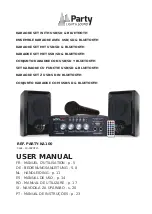
Section 6: Maintenance &Troubleshooting
Spirit II User’s Manual
This information is subject to the controls of the Export Administration Regulations [EAR]. This information shall not be provided to
non-U.S. persons or transferred by any means to any location outside the United States contrary to the requirements of the EAR.
6-2
Manual Gas Console (MGC)
1. Remove the cover of the manual gas console. Using clean, dry, compressed air (30
psi maximum), blow out all accumulated dust inside the unit. In an excessively dirty
environment, blow out the unit on a weekly basis.
2. Verify that all PC board connectors are installed securely.
3. Verify that all gas hose connectors are tight and that there are no leaks.
Only
tighten the gas fittings enough to make a gas seal. The fittings are subject to
damage if over tightened
.
4. Inspect all gas hoses to ensure no damage exists. Immediately replace any
damaged gas hoses.
Torch, Torch Leads, and Gas Hoses
1. Verify that all torch lead and gas hose connections are tight and that there are no
gas or coolant leaks.
Only tighten the fittings enough to make a coolant or gas
seal. The fittings are subject to damage if over tightened
.
2. Verify that the braided shield of the torch leads is fastened securely to the brass
shield adapter that connects to the arc starting console. Also, make sure the shield
adapter is secured tightly to the arc starting console enclosure.
3. Inspect the braided shield for nicks or cuts and replace if necessary.
4. Remove the torch handle and verify that the connections at the torch base are
tightened securely.
Only tighten the fittings enough to make a coolant or gas
seal. The fittings are subject to damage if over tightened
. Coolant leaking from
the drain hole in the torch handle indicates damaged or loose torch leads.
5. Make sure the torch lead insulating sleeves are positioned to properly cover the
brass torch fittings at the torch base.
6. Inspect the outer sleeve on the torch base's electrode/coolant supply lead. If
nicks, cuts or holes are found, replace the torch base.
7. Remove the torch consumables from the torch head and inspect all o-rings.
Replace any o-rings with cuts, nicks, abrasions, or any other signs of wear.
Faulty o-rings may cause gas or coolant leaks, which will affect cut quality.
8. With the electrode removed, inspect the cooling tube in the torch head for
damage.
If using the copper electrode, the torch head uses cooling tube P/N BK277007. If
replacement is required, use tool P/N BK200109.
If using the silver electrode, the torch head uses cooling tube holder assembly
P/N BK279216. Remove this using the tool (socket P/N BK277087 & driver P/N
BK277086) and inspect the o-rings for damage. Apply a small amount of o-ring
lubricant before re-installing in the torch head.
9. Wipe any excess o-ring lubricant off of the torch base and head.
















































